A trip to Dunnottar Castle in Aberdeenshire
Located not even 20 miles south of Aberdeen lies a once mighty and impregnable castle, steeped in over 1,000 years of history. Dunnottar Castle is perched atop a 160-foot rock and was once home to one of the most powerful families in Scotland – the Earl Marischal.
Dunnottar Castle has been the site of many significant events in Scotland’s history, most notably being the hiding place of the Honours of Scotland in the 17th century.
I recently enjoyed an afternoon exploring one of Aberdeenshire’s most iconic fortresses and couldn’t recommend it enough! It is a fascinating place to visit and discover a real taste of history.
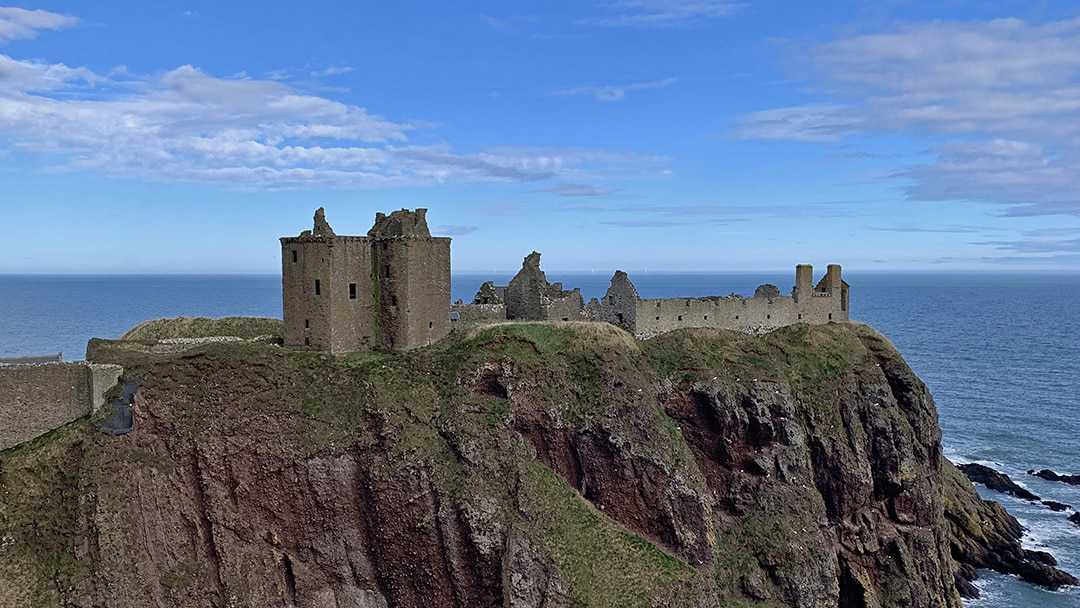
It is not surprising that Dunnottar Castle has appeared as the backdrop in many films like Hamlet and Viktor Frankenstein because of its breathtaking and evocative setting. It is also known to be the inspiration behind the Pixar animated movie Brave.
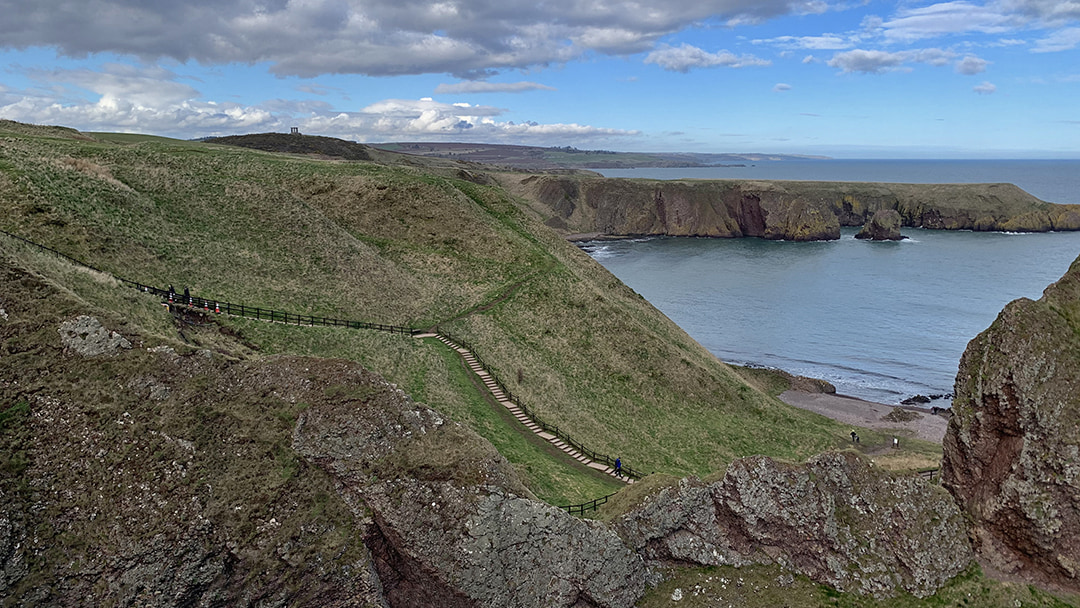
To enter the Castle, you must first walk 200 steps down the cliffside before climbing a steep staircase. Unfortunately, there are no ramps and the terrain can be extremely uneven in places due to the nature of the Castle’s location, making the site unsuitable for those with mobility issues.
To say I was tired once I made it to the top is an understatement! Once I had finally caught my breath, I ventured further into the Castle and felt as though I had been transported back in time.
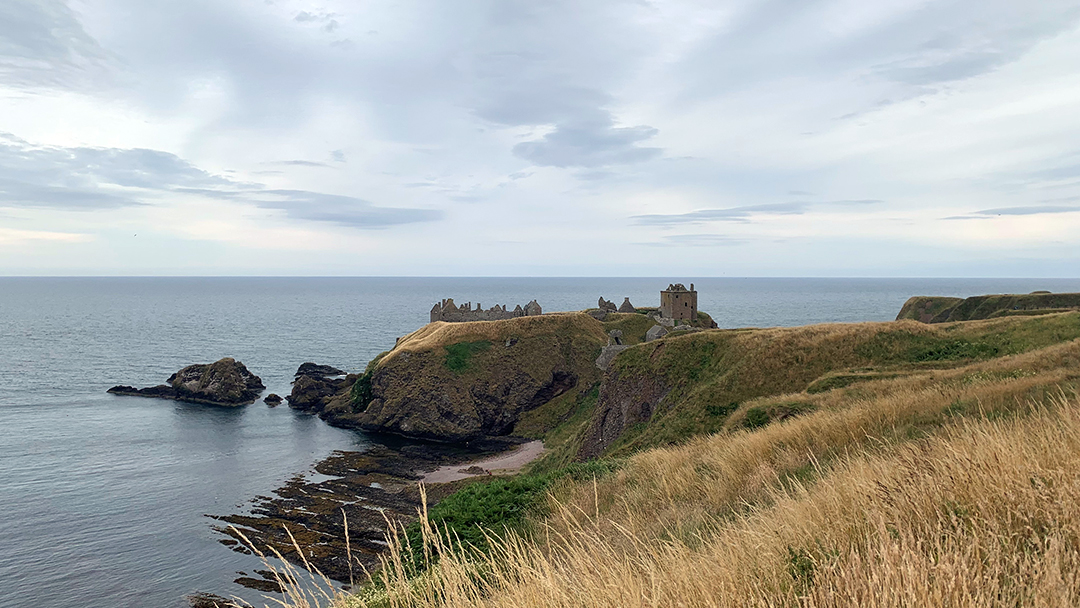
Forged by history
Dunnottar Castle was originally an ancient Pictish settlement between 5,000BC and 700AD. This corresponds with the name ‘Dunnottar’ deriving from the Pictish word ‘Dun’ meaning hill fort or place of strength. However, legend also says that Saint Ninian, an early Christian missionary, founded a place of worship where the present castle stands around 400AD.
Over the following turbulent centuries, many of the original buildings were destroyed, rebuilt and then destroyed again. Due to its strategic location, Dunnottar Castle has been attacked by the Vikings, English armies and by famed Scottish warrior William Wallace, just to name a few!
When Sir William Keith – the Great Marischal of Scotland – acquired the Castle towards the end of the 14th century, it was then that the Castle complex we see today was built. Throughout history, many Scottish Kings and Queens (including Mary Queen of Scots) have stayed at Dunnottar and partaken in its lavish feasts and gatherings.
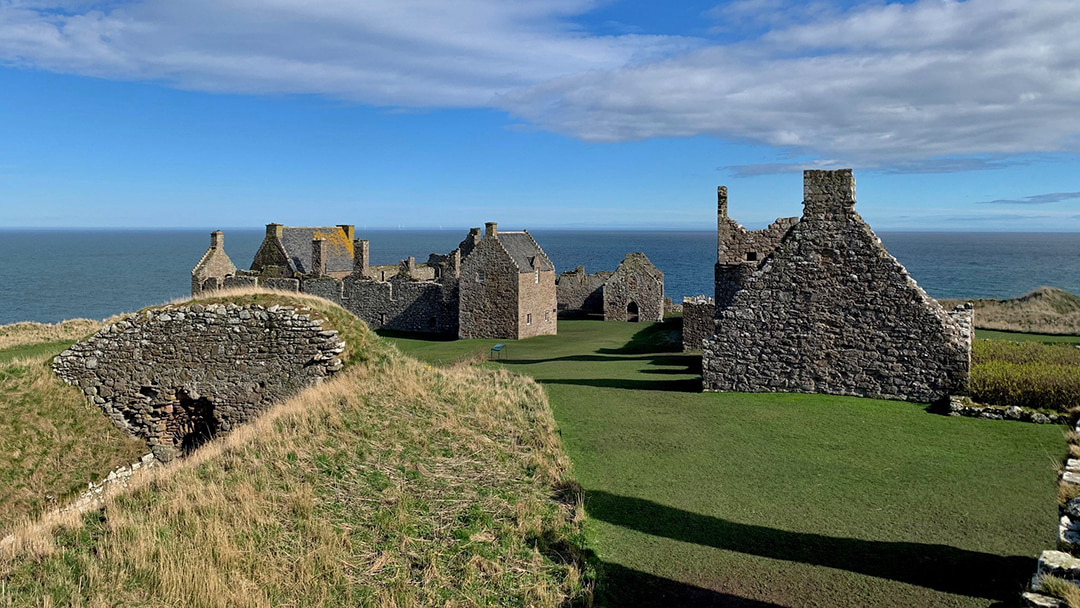
Exploring the ruins
When you consider all of the challenges Dunnottar Castle has faced over the years, its remnants are absolutely impressive. The size of the complex took me by surprise as when I thought I had seen it all, I would stumble across another building I hadn’t yet explored. It was never-ending!
With the exception of the recently restored drawing room, almost every structure is roofless and in a ruinous state. The Castle was vacated in 1715, and deteriorated until restoration works began in 1925 when Sir Weetman Pearson purchased the site.
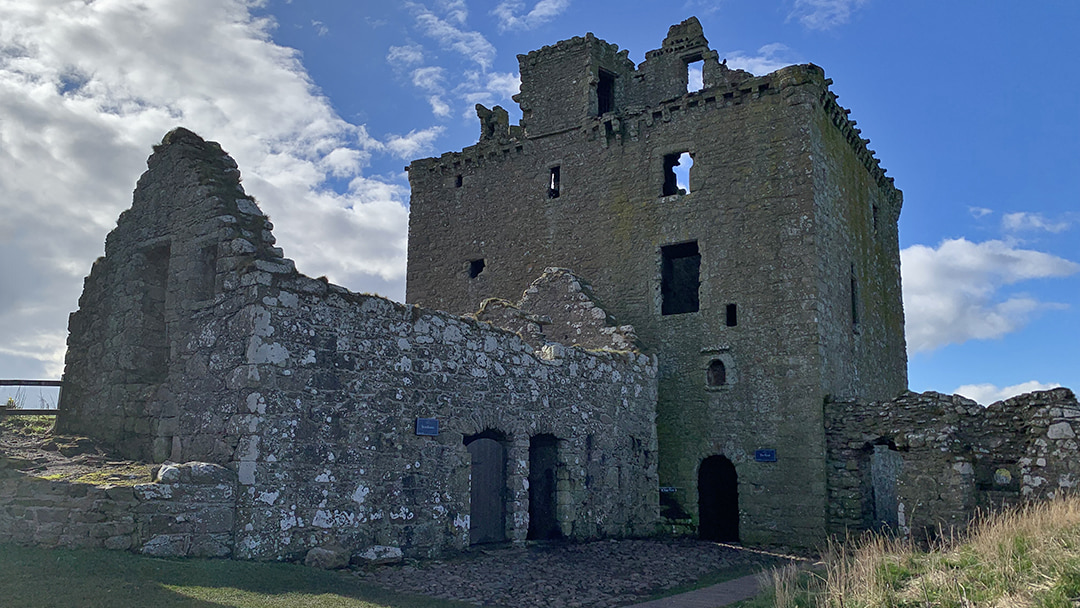
One of the first structures you encounter and the one that is most visible from the mainland is the Keep (also known as the Tower House). Built in 1392 by owner Sir William Keith, it is the oldest building that is still standing on the property. The Keep housed the great hall, the Castle’s original kitchen and a private residence for the Earl Marischal and his family.
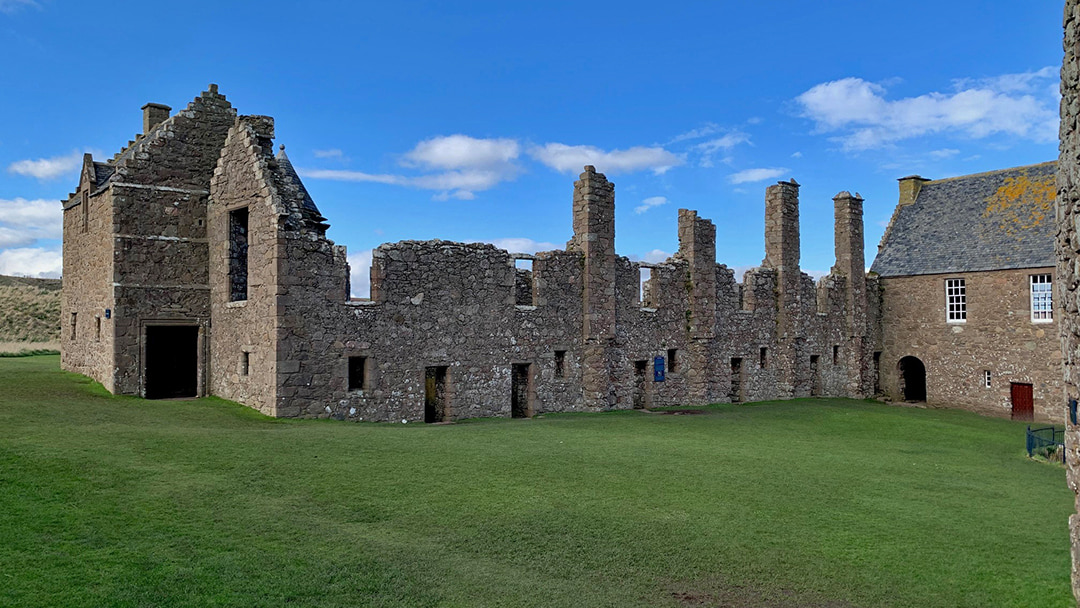
Adjacent to the Keep is the storehouse, smithy and the stables which were home to the Earl Marischal’s 12 finest horses. The Palace is another interesting ruin to explore due to its size. Wandering through this building made me think about what life must have been like for those who lived here. This building was mostly used as accommodation for castle staff, but also contained a ballroom, kitchen, brewery, and the fully restored drawing room.
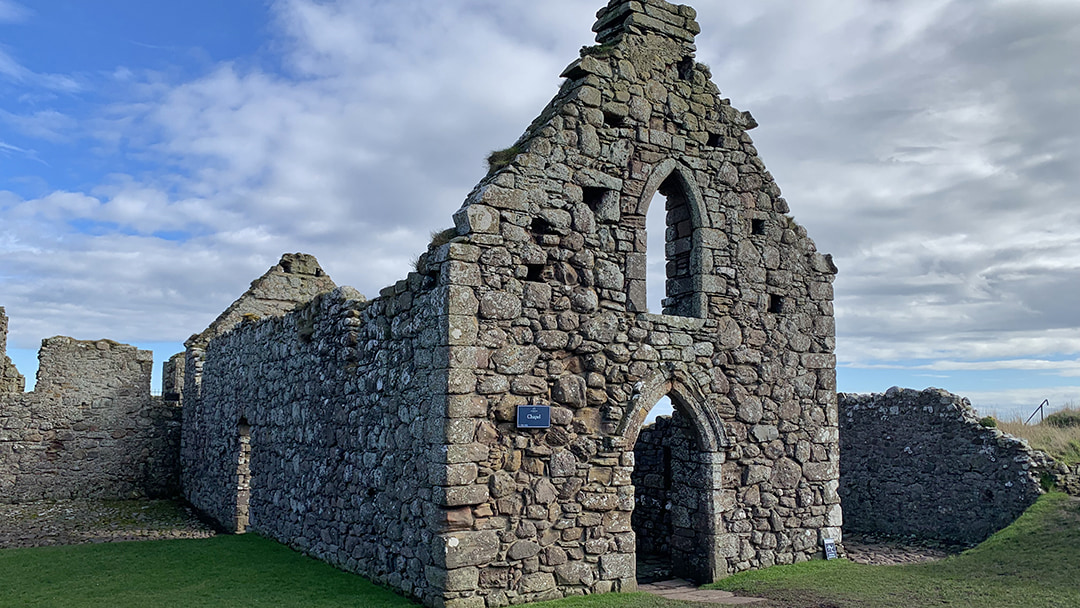
One notable building is the Chapel, which has a turbulent history. The original chapel was constructed in 1276, but William Wallace burnt it down with an English army trapped inside barely 23 years later. The chapel was rebuilt soon after, and was further renovated in the 16th century, where two small gothic windows survived to this day.
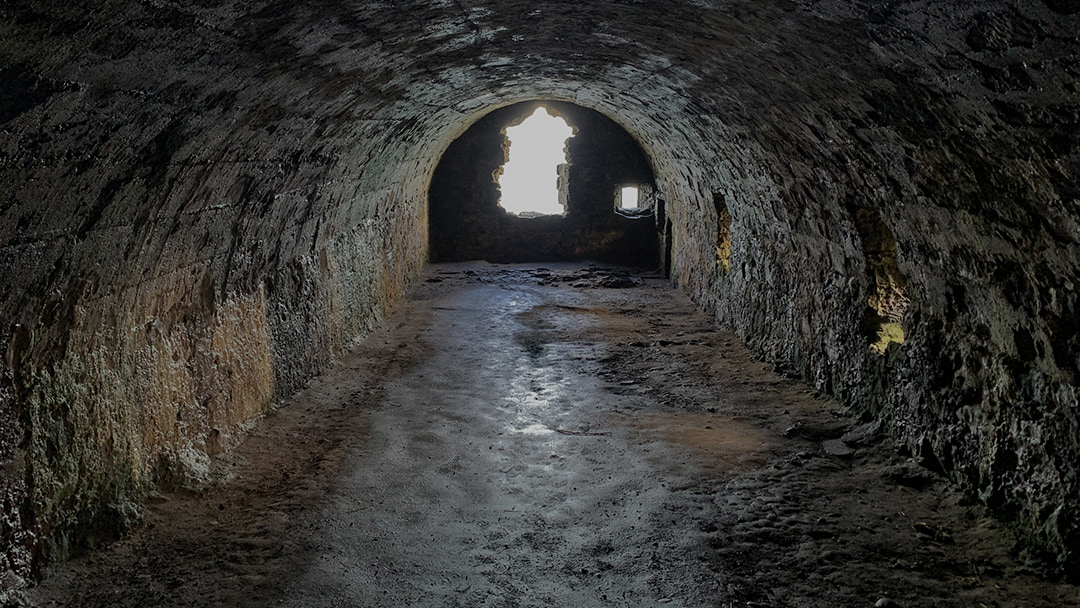
The Whigs Vault
The Whig’s Vault is an eerie room to enter as it is the site of one of the darkest moments in Dunnottar’s past. In 1685, 200 ‘Whigs’ (those who refused to pledge allegiance to the King of England as head of the church) were marched from Edinburgh to Dunnottar Castle. Only 167 survived the journey, before they were imprisoned in a cellar now known as the infamous ‘Whig’s Vault’.
They suffered appalling and unsanitary conditions for six weeks while receiving little food or water. Some perished from starvation and illness, whilst others were killed whilst attempting to flee. The survivors were later sailed to America to be sold as slaves, with a further 70 losing their lives at sea.
The Honours of Scotland
There have been many significant events which took place at Dunnottar Castle throughout its relentless history, but arguably none as important as it being the hiding place for the Honours of Scotland in the 17th century.
The Honours of Scotland are the oldest regalia in Britain and consists of a crown, sword and sceptre. To prevent Oliver Cromwell from destroying them like he did to the English Crown Jewels, they were hidden within Dunnottar Castle. In 1651, an English army arrived at Dunnottar to steal the Honours. After an 8-month siege, Dunnottar finally surrendered but when the English raided the Castle, the Honours were nowhere to be found.
The Honours were at some point smuggled out of the Castle during the siege by Mrs Grainger, the wife of the church’s minister. There are several tales as to how she achieved this, but the true story has never been revealed. While some stories claim she smuggled the Honours out by lowering them down the cliffside in a basket to her serving maid, others say she walked out with them underneath her skirt!
A paradise for bird watchers
Castles are often considered to only be for history enthusiasts, but Dunnottar Castle has something for everyone. As I explored the ruins, it was hard to ignore the calling of hundreds of seabirds which nest on the surrounding sea cliffs.
Eider ducks, cormorants, guillemots, razorbills, herring gulls and fulmars can be spotted here, and they are in their highest numbers during May and June. If you are fortunate enough, you can even catch a glimpse of dolphins, seals, and even whales, out at sea.
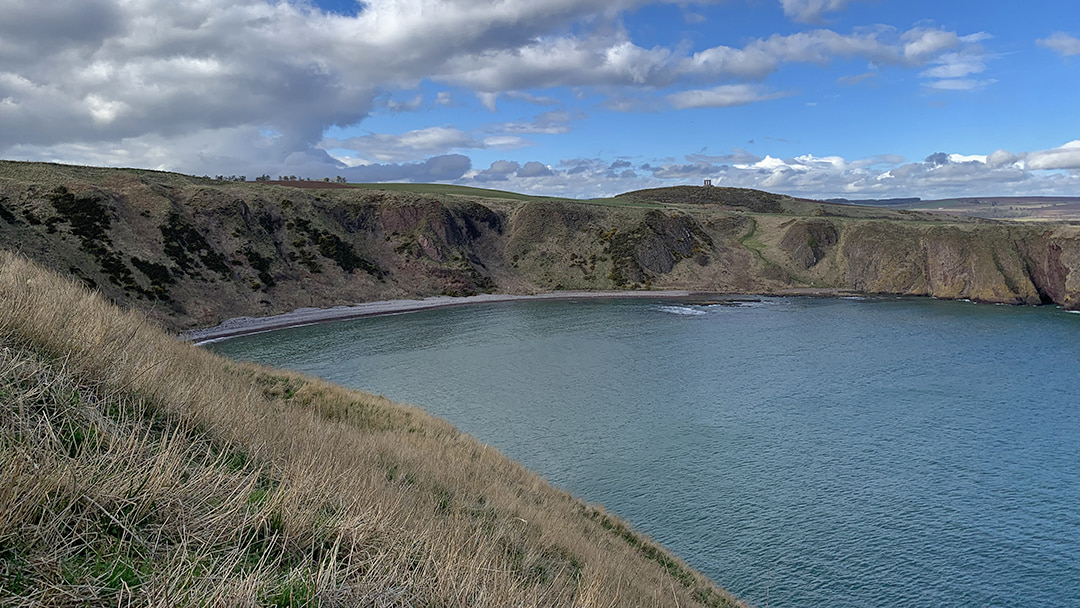
The scenery of Dunnottar is worth visiting in itself, with spectacular sea views and even sight of the Stonehaven War Memorial. The site is often blustery due to its exposed location, and the powerful crashing waves below add to the already mysterious atmosphere.
Dunnottar Castle is open every day for visitors, with seasonal opening times. The Castle can occasionally close at short notice due to poor weather conditions. Please keep up to date by checking their website www.dunnottarcastle.co.uk before you visit.
Next to the car park, a small refreshment stand can be found serving hot and cold drinks, snacks and hot food. Dogs are also welcome at Dunnottar Castle as long as they are kept on a leash.
Find out more about other Castles in Aberdeenshire here.
 By Amy Leith
By Amy LeithA recent university graduate with an admiration for Orkney and Shetland, loves to travel and visit new places, enjoys cooking, always listening to music, spends a little too much time on TikTok.
Pin it!

